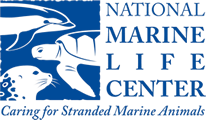Amazing Seal Adaptations
 I am one of the interns working at the NMLC this summer, and I am thrilled to have the opportunity of assisting in the rehabilitation of fascinating marine and aquatic species. I just finished my first year of veterinary school, and I am enjoying my time learning about the unique wildlife species that inhabit the ocean. Currently our hospital is housing 3 harbor seal pups and 1 sub-adult grey seal. Seals belong to a group of marine mammals called pinnipeds, which means “fin- or flipper-footed,” along with sea lions and walruses. I thought it would be fun to share some interesting facts and unique adaptations of seals that I learned while reviewing some notes.
I am one of the interns working at the NMLC this summer, and I am thrilled to have the opportunity of assisting in the rehabilitation of fascinating marine and aquatic species. I just finished my first year of veterinary school, and I am enjoying my time learning about the unique wildlife species that inhabit the ocean. Currently our hospital is housing 3 harbor seal pups and 1 sub-adult grey seal. Seals belong to a group of marine mammals called pinnipeds, which means “fin- or flipper-footed,” along with sea lions and walruses. I thought it would be fun to share some interesting facts and unique adaptations of seals that I learned while reviewing some notes.
- Seals can swim up to a speed of 17 miles per hour and stay submerged for as long as 30 minutes. Wow! A half hour seems like a long time to go without taking a breath of air- how do they do it?!
- The red blood cells of seals are larger than that of terrestrial mammals and have more hemoglobin, the molecule inside of red blood cells responsible for binding to oxygen. This enables the seal to have better oxygen storage; in fact, they can store twice the amount of oxygen per kilogram of body weight than people!
- While diving, their heart rate can decrease from about 70 beats per minute to 7 beats per minute, thereby decreasing the oxygen requirements of the heart, composed of cardiac muscle. Various blood vessels constrict during this time to maintain an adequate blood pressure.

- Blood flow is shunted from peripheral tissues and stored in a network of sinuses that serve as blood reservoirs. This enables there to be an adequate oxygen supply for tissues that are dependent on oxygen to create energy by aerobic metabolism (like the retina, brain and spinal cord) for the extended periods of time while they are submerged under water!
- Seals’ kidneys temporarily don’t function during a dive, and skeletal muscles responsible for the animal’s locomotion use anaerobic metabolism to produce energy.
Seals are truly amazing animals and I am so excited to part of the team helping these animals at the NMLC to grow stronger so they can be returned to the wild. Come visit the Discovery Center at 2 pm Monday – Saturday to learn more about the animals we care for and the progress they are making!
By: Rachel Madenjian
